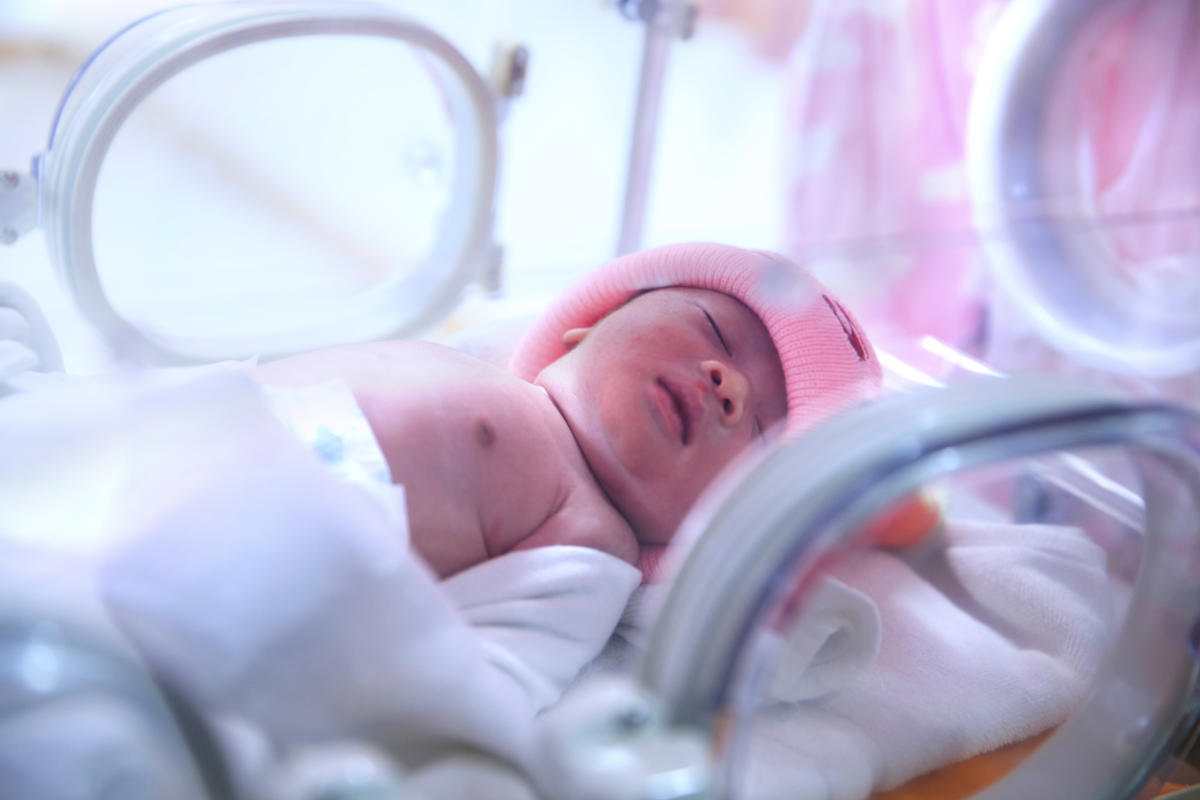What Are the Leading Causes of Birth Injuries?

Several factors can contribute to birth injuries, such as prolonged or difficult labor, issues with fetal positioning, large birth weights, premature births, the use of instruments during delivery, complications with the umbilical cord, fetal distress, maternal health conditions, and medical malpractice or negligence.
According to the CDC, birth injuries affect approximately 6 to 8 out of every 1,000 live births in the United States. These injuries range from minor bruising to more severe conditions like cerebral palsy, Erb’s palsy, or brain damage. While not all birth injuries are preventable, medical professionals’ competence, careful monitoring during pregnancy and labor, and appropriate interventions can significantly reduce the risk of avoidable birth injuries. Proper prenatal care, skilled delivery assistance, and attentive healthcare can help ensure safer births and healthier outcomes for both the mother and the baby.
Common Causes of Birth Injuries
There are several reasons why babies may be injured during childbirth. The most common causes are prolonged labor, fetal positioning, large birth weights, prematurity, instrument-assisted delivery, and complications associated with the umbilical cord.
Prolonged Labor or Difficult Birth
When labor takes too long or becomes challenging, it can be tough for the baby. Prolonged labor, or dystocia, puts extra strain on the baby’s body, raising the chances of birth injuries. Sometimes, difficult births can happen, such as when the baby’s shoulders get stuck behind the mother’s pelvic bone, a condition known as shoulder dystocia. These situations can be scary for both the baby and the mother, requiring careful handling by medical professionals to avoid potential injuries and ensure safe delivery.
Fetal Positioning
How the baby is positioned during birth plays a crucial role in the risk of injury. For instance, if the baby is in a breech presentation, with their buttocks or feet positioned to come out first, it can raise the chances of birth trauma. This situation can be worrying, as the baby’s head might not be in the ideal position for a smooth delivery. Medical professionals closely monitor fetal positioning to ensure the safest possible birth and take appropriate measures if any complications arise, aiming to protect both the baby and the mother throughout the process.
Large Birth Weight
Babies with a higher birth weight (macrosomia) could be at a greater risk of injury during delivery, especially if they are larger than the mother’s pelvis can handle. This can make the birthing process more challenging, and there’s a possibility that the baby might experience birth trauma as a result. Medical professionals are vigilant about estimating the baby’s size during prenatal care to anticipate any potential difficulties during delivery. In cases where the baby’s weight is a concern, they may consider alternative delivery options or take precautionary measures to ensure a safe and healthy birth for both the baby and the mother.
Prematurity
Premature babies are more susceptible to injuries because their organs and bodies are not fully developed. Babies born prematurely may encounter greater difficulties adjusting to life outside the womb. Their fragile condition makes them more at risk of various health issues, and the medical team must provide specialized care to support their growth and development. With proper medical attention and nurturing, premature infants have a higher chance of thriving and overcoming their initial vulnerabilities. The care and support they receive in the early days play a vital role in ensuring their well-being and future health.
Instrument-Assisted Delivery
Sometimes, during delivery, medical professionals may use tools like forceps or vacuum extractors to assist in the process. However, improper use of these instruments can result in birth injuries to the baby. The safety and expertise of the healthcare team are critical in ensuring a smooth and safe delivery when these tools are involved. Proper training and careful handling are essential to minimize the potential risks and protect the well-being of both the baby and the mother during instrument-assisted deliveries. Close monitoring and swift action can help avoid any complications and ensure a positive outcome.
Umbilical Cord Complications
Umbilical cord complications can be problematic during childbirth. If the cord becomes prolapsed (slips back into the birth canal before the baby), tangled around the baby’s neck (nuchal cord), or compressed, it can disrupt the baby’s oxygen supply and potentially lead to birth injuries. It is imperative that the medical team address any complications with the umbilical cord as soon as possible, as it is responsible for nourishing and oxygenating the baby in the womb. Prompt action and appropriate interventions are essential to safeguard the baby’s well-being and prevent any lasting harm during this critical moment of bringing new life into the world.
Fetal Distress
Fetal distress can be concerning during labor and delivery. When the baby experiences a shortage of oxygen (fetal hypoxia) or other signs of distress, it can lead to birth injuries. The medical team closely monitors the health and well-being of the baby throughout the birthing process to promptly identify any signs of distress. Immediate action is taken to address the situation and ensure the baby receives the necessary support and care. Timely interventions are crucial in minimizing the risk of birth injuries and providing a safe and healthy delivery for both the baby and the mother.
Inadequate Prenatal Care
Inadequate prenatal care can be risky for both the baby and the mother. When there is not enough monitoring of the baby’s health during pregnancy, potential issues that could cause birth injuries may go unnoticed. Regular prenatal check-ups and thorough examinations help healthcare providers catch any problems early on, allowing for timely interventions and necessary precautions. Proper prenatal care ensures that the baby’s development is closely tracked, reducing the chances of complications during childbirth. Expectant mothers are encouraged to seek comprehensive prenatal care to ensure a smooth and healthy pregnancy journey and increase the likelihood of a safe delivery for their precious little one.
Medical Negligence or Malpractice
Medical negligence or malpractice during labor and delivery can have serious consequences. Mistakes made by healthcare providers, like misdiagnosis, delayed treatment, or improper use of medical equipment, can result in birth injuries. The impact of such errors on the baby and the family can be devastating, both emotionally and financially. It highlights the importance of skilled and attentive medical professionals during this critical time. Clear communication, thorough training, and a commitment to patient safety are vital in preventing such incidents. When medical errors occur, it’s essential to seek accountability and proper recourse to ensure the well-being of all involved parties.
Maternal Health Conditions
Maternal health conditions play a crucial role in a baby’s well-being during pregnancy. Conditions like gestational diabetes or infections can raise the risk of birth injuries for the baby. Expectant mothers must receive regular prenatal care to monitor and manage health issues effectively. Medical professionals work closely with pregnant women to ensure that these conditions are kept under control and potential risks are minimized. Taking care of the mother’s health is not only vital for her but also significantly impacts the health and safety of the growing baby, providing them with the best chance of a healthy start to life.
How To Find the Best Birth Injury Lawyer
Expertise.com identifies and reviews the top professionals across the country. We research more than 60,000 businesses to help customers find the best-qualified professionals for their needs. We continuously update our research process to remain relevant to the industry, so we are confident when we refer to a provider as one of the best, we are making the right choice. Find the best birth injury lawyer using the Expertise.com directory.
Expertise.com StaffAuthor
Step into the world of Expertise.com, your go-to hub for credible insights. We don't take accuracy lightly around here. Our squad of expert reviewers, each a maestro in their field, has given the green light to every single article you'll find. From rigorous fact-checking to meticulous evaluations of service providers, we've got it all covered. So feel free to dive in and explore. The information you'll uncover has been stamped with the seal of approval by our top-notch experts.

Wallace Wason, Jr.Reviewer
Wallace Wason, PLLC (https://wallacewason.com) is a client-focused malpractice and injury law firm with attorneys located in Alexandria, VA serving injured persons in all of Virginia, Maryland and the District of Columbia.

![How Much Does a Birth Injury Lawyer Cost? [2023] DUP IMAGE](https://images.ctfassets.net/k00sbju4hbzq/14o36UI4eEh3GDQQqxKHxe/f3736140ec537a1c22e86b0a9809a565/Depositphotos_153078350_XL.jpg?fit=fill&w=384&q=75)


